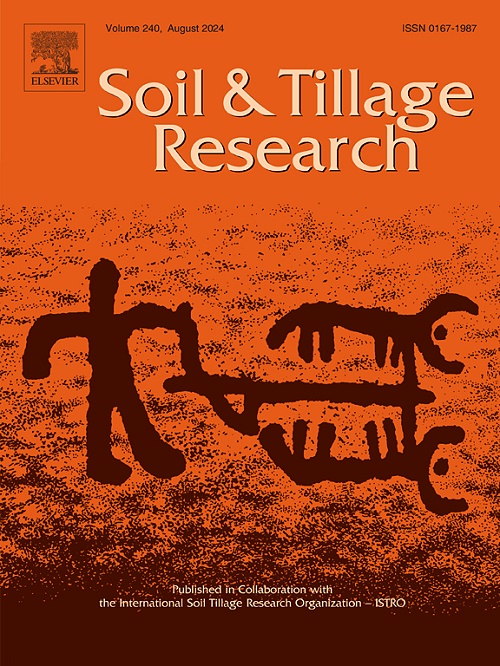Conservation agriculture boosts topsoil organic matter by restoring free lipids and lignin phenols biomarkers in distinct fractions
IF 6.1
1区 农林科学
Q1 SOIL SCIENCE
引用次数: 0
Abstract
Conservation-based practices may differentially regulate the pathways of soil organic carbon (SOC) formation and stabilization. Yet, we lack the knowledge regarding alternative farming on the quantity and composition of distinct C pools within soil matrix. To fill the knowledge gap, we sampled soils down to 0–20 cm layer from three tillage practices, i.e., conventional tillage (CT), rotary tillage (RT), and no-tillage (NT) in a 17-year trial in Northern China. We quantified the targeted SOC molecular fingerprints (i.e., free lipids and lignin phenols, lability and origins) in three functional fractions: particulate organic matter (POM, > 53 μm), coarse (cMAOM, 2–53 μm) and fine mineral-associated organic matter (fMAOM, < 2 μm). Our results showed that NT (cf. CT) increased SOC amounts by 33 % in POM and by 61 % in fMAOM in the 0–10 cm layer. Compared with CT, NT increased the plant-derived lipids (i.e., ≥ C20 and steroids) by 19 % in POM and by 45 % in cMAOM, selectively preserving the structural plant-derived compounds; RT augmented microbial-derived lipids (i.e., < C20 and simple sugars) by 18 % in POM and plant-derived lipids by 64 % in cMAOM in this topsoil. In contrast, conservation-based practices (i.e., RT and NT) decreased the plant-derived lipids by 37–40 % and microbial-derived lipids by 20–40 % relative to CT in lower 10–20 cm layer. Besides, RT and NT (cf. CT) enhanced lignin phenols in both POM (26–35 %) and fMAOM fractions (42–58 %) in topsoil, but RT decreased these lignin phenols by 36 % in POM in deep layer. Partial Least Squares – Path Modeling revealed the increased topsoil organic C under conservation practices via restoring free lipids and lignin phenols in POM and fMAOM fractions. Collectively, our study highlights that conservation agriculture alters the SOC amounts and biogeochemistry in soil functional fractions, which could provide some mechanistic insights into soil C accrual pathways and persistence in temperate agroecosystems.
求助全文
约1分钟内获得全文
求助全文
来源期刊

Soil & Tillage Research
农林科学-土壤科学
CiteScore
13.00
自引率
6.20%
发文量
266
审稿时长
5 months
期刊介绍:
Soil & Tillage Research examines the physical, chemical and biological changes in the soil caused by tillage and field traffic. Manuscripts will be considered on aspects of soil science, physics, technology, mechanization and applied engineering for a sustainable balance among productivity, environmental quality and profitability. The following are examples of suitable topics within the scope of the journal of Soil and Tillage Research:
The agricultural and biosystems engineering associated with tillage (including no-tillage, reduced-tillage and direct drilling), irrigation and drainage, crops and crop rotations, fertilization, rehabilitation of mine spoils and processes used to modify soils. Soil change effects on establishment and yield of crops, growth of plants and roots, structure and erosion of soil, cycling of carbon and nutrients, greenhouse gas emissions, leaching, runoff and other processes that affect environmental quality. Characterization or modeling of tillage and field traffic responses, soil, climate, or topographic effects, soil deformation processes, tillage tools, traction devices, energy requirements, economics, surface and subsurface water quality effects, tillage effects on weed, pest and disease control, and their interactions.
 求助内容:
求助内容: 应助结果提醒方式:
应助结果提醒方式:


